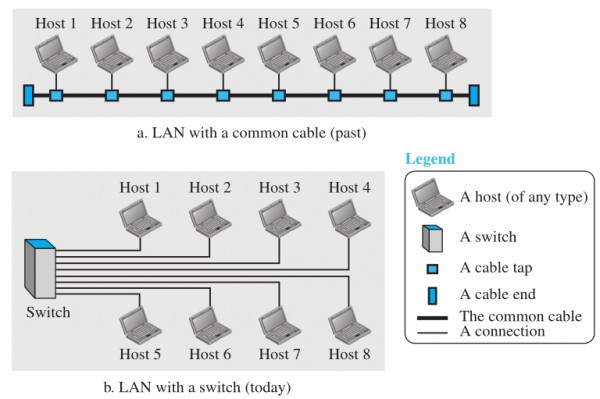@jeet even i have problem with this topic..
correct me if i am wrong here:
Here it is given in the question that 15 computers need to be connected.. we can connect all 15 computers as shown in fig.a.
But we need to connect as shown in the figure.b attaining the same functionality as shown in figure a.
It is given that switch has 8 ports and it is given that there are no uplink ports. So all 8 ports can be used for connecting other devices.
we can connect 8 devices to a single switch .In that way ,we can connect 15 computers with 2 switches. but these 2 switches need to be connected so that all the devices are connected.
So we have to dedicate 1 port to connect with other switch..
Now you can refer satbir's answer.
